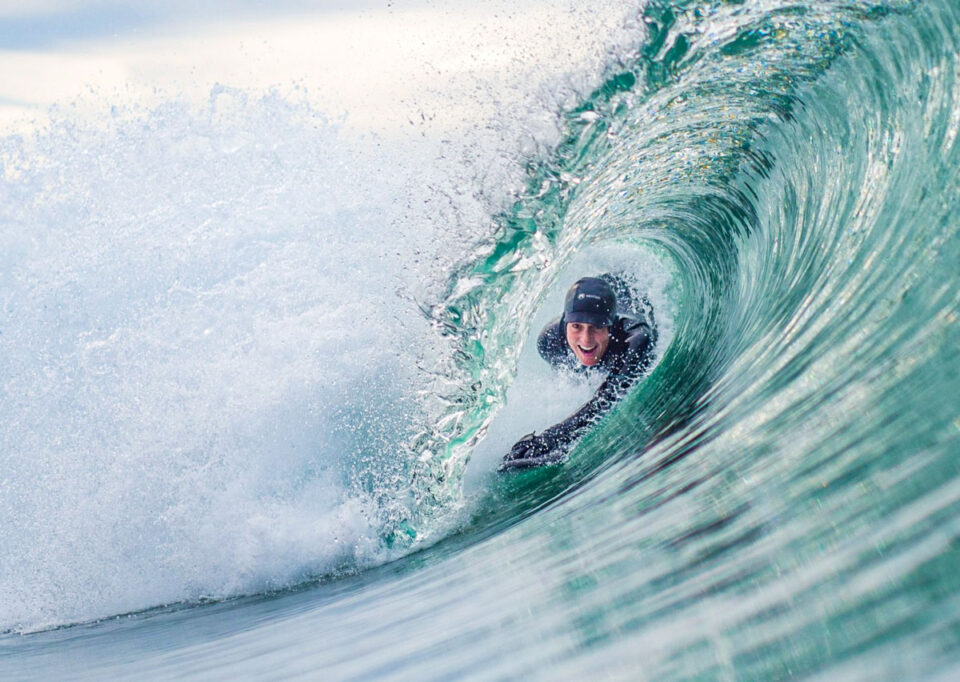I first began bodysurfing in the early ’60s, after hitchhiking to Huntington Pier, where I terminated my journey from inland, but found myself without a surfboard.
Not that it would have mattered anyway — board surfing was banned after 10 a.m. and we never arrived there until around noon.
The surf, as I recall, was generally chunky and blown out and at higher tides turned the shore break into an aquatic wheel of fortune — good fortune for those catching the best waves, bad if you landed wrong.
Don’t get me wrong, HB Pier is not a Newport Wedge jackhammer that can snap your neck in a fraction of a second, but it can display enough power to get your attention.
Being good at bodysurfing, which I am not, requires timing, technique, and agility. Timing, in being able to catch the right wave in the right spot at the right moment, and tuck roll out the back of before it grinds you into the bottom.
Technique, in knowing where to put your hands and how to angle and place your body as you ride.
Agility, in being able to twist and flex instantly as green water turns top mud.
Nothing else is required for bodysurfing except a swimsuit, although fins are helpful for those of us requiring a little extra help. Short, stiff fins seem to be best for the sport and can be purchased for around fifty bucks at your local surf shop.
Once called “handguns,” before that term fell out of favor for obvious reasons, small planing devices that fit onto the hand are now known as “hand planes” or “hand boards” and can enhance the ride by offering more planing surface and a longer ride.
Legendary North Shore lifeguard Mark Cunningham is among the greatest bodysurfers of my generation and could often be seen getting deep barrels at Pipeline amid a field of foam and fiberglass.
In Southern California, the aforementioned Newport Wedge is the place for great bodysurfing. The good news is you don’t have to be a great swimmer to bodysurf the Wedge.
The bad news is that when the Wedge is living up to its name, a tiny side wave will combine with a decent sized incoming swell, jack up the wave to many times its original height and unload tons of saltwater in one big painful womp!
Kneeboards, bodyboards, hand planes and purists with nothing but a set of Duck Feet compete for the peak and fall from the sky into those hungry jaws.
Board surfing has also become common in recent years at the Wedge, where surfers take off deep and score barrels not found this side of Hawaii.
My suggestion to the inexperienced is to watch the Wedge, rather than ride it.
The next time you hear of a big south swell hitting the California coast, head down early and find a place in the sand. Trust me, the show is well worth the price of admission.
Otherwise, San Diego’s North County offers a fun alternative for those who don’t relish sacrificing broken bones to the ocean. So, pick up a pair of fins and I’ll catch you in the fun zone.
***
Back in the world of foam and fiberglass, don’t forget to check out California Surf Museum’s latest exhibit: “Donald Takayama: Shaping Boards and Lives.”
The California Surf Museum, which requires a small donation to enter, is open from 10 a.m. to 4 p.m. daily and is located at 312 Pier View Way in Oceanside.



